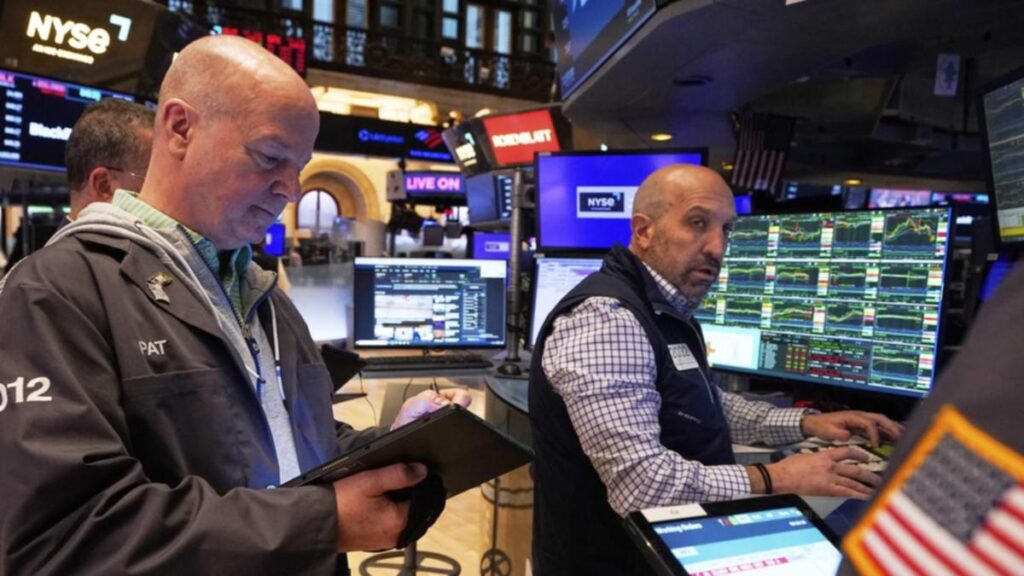Wall Street’s main indexes have lost more than one per cent each after US President Donald Trump’s attacks against Federal Reserve Chair Jerome Powell fueled concerns about the central bank’s autonomy and rattled investors grappling with an intensifying trade war.
White House economic adviser Kevin Hassett said on Friday that Trump and his team would study whether firing the Fed chair was an option, a day after Trump’s comments that Powell’s “termination cannot come fast enough”.
The continued attacks on Powell increased worries about the Fed’s independence in setting monetary policy path in the world’s largest economy, hitting investor confidence in US assets already diminished by Trump’s sweeping trade tariffs.
“The question is whether Powell could get fired. Apparently, Trump doesn’t have the power to do that,” said Ipek Ozkardeskaya, senior market analyst at Swissquote Bank.
“Powell looks like the only one who could counter — and win — against Trump, but the markets could well continue to be the collateral damage.”
A case pending before the Supreme Court is being closely watched as a potential precedent for whether Trump can remove Powell.
In early trading on Monday, the Dow Jones Industrial Average fell 449.67 points, or 1.15 per cent, to 38,692.56, the S&P 500 lost 63.52 points, or 1.20 per cent, to 5,219.18, and the Nasdaq Composite dropped 226.68 points, or 1.39 per cent, to 16,059.77.
Energy stocks were the worst hit, falling 2.3 per cent, while declines in megacap and growth stocks weighed on the information technology and consumer discretionary sectors.
Tesla fell 5.2 per cent after a Reuters report said the launch of the EV-maker’s cheaper Model Y car was delayed.
Nvidia was last down 3.9 per cent after Reuters reported that Huawei Technologies planned to begin mass shipments of an advanced AI chip to customers in China as early as next month.
The small-cap Russell 2000 lost 1.2 per cent.
Tariff worries continued to haunt investors after China’s warning against striking deals with the US at Beijing’s expense. Fed policymakers also flagged a cloudy interest-rate outlook owing to tariff uncertainty.
Traders are now pricing in about 90 basis points of easing from the Fed this year, according to data compiled by LSEG.
The uncertainty over trade and monetary policy has hit stocks hard this year, with the S&P 500 down more than 15 per cent from its February record high.
Company results will be keenly watched this week for clues on how corporations are navigating the uncertainty, as Tesla and Alphabet kick off earnings for the “Magnificent Seven” megacap stocks.
Netflix shares rose 2.6 per cent following an upbeat revenue outlook from the streaming giant despite possible economic turbulence.
Capital One Financial gained 2.2 per cent after US banking regulators said on Friday that they had approved its $35.3 billion purchase of Discover Financial Services, which advanced 4.3 per cent.
Gold miners rose tracking prices of the safe-haven precious metal, with Newmont adding 2.4 per cent.
Declining issues outnumbered advancers by a 4.28-to-1 ratio on the NYSE, and by a 2.65-to-1 ratio on the Nasdaq.
The S&P 500 posted one new 52-week high and no new lows, while the Nasdaq Composite recorded 10 new highs and 47 new lows.

